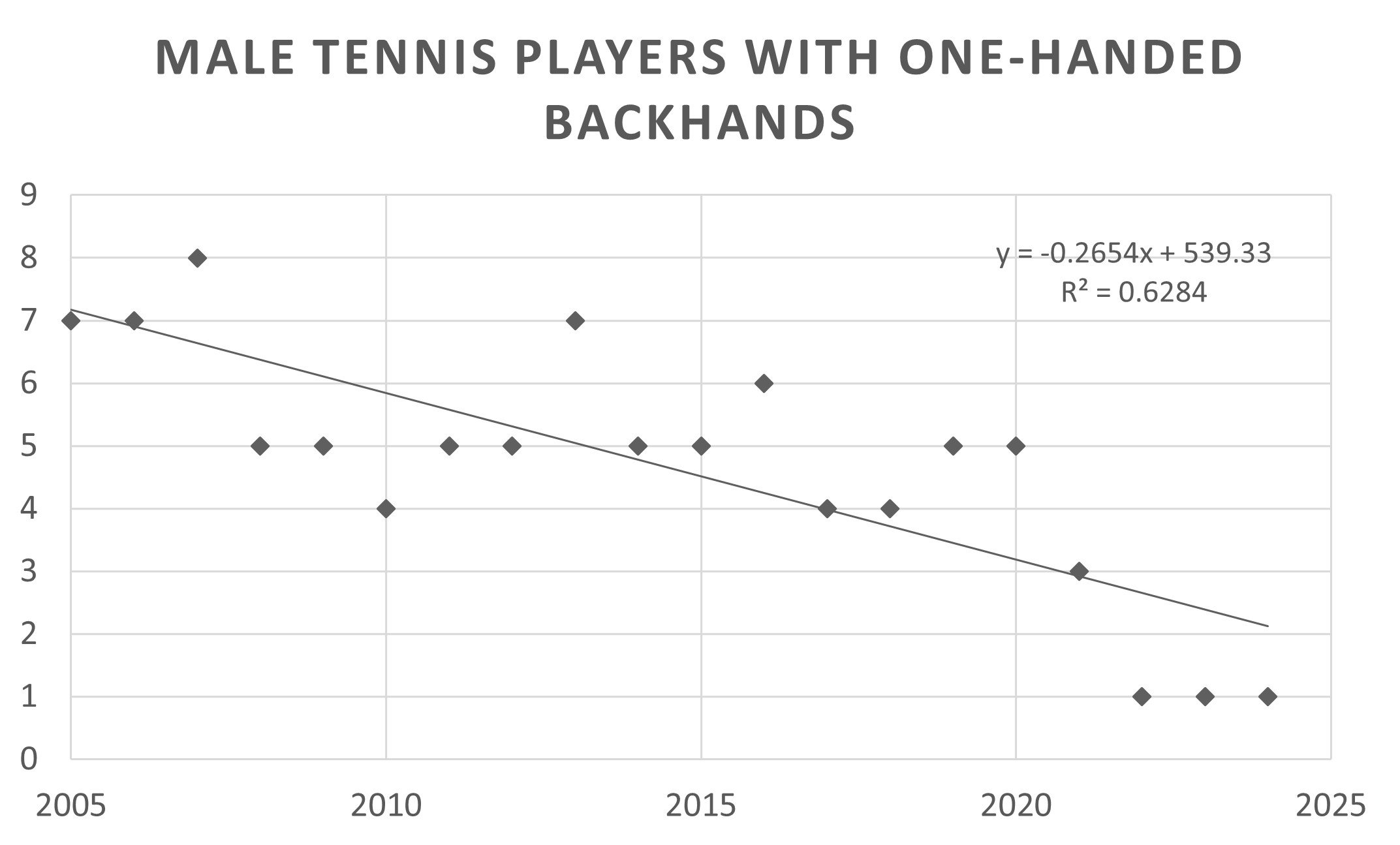Should You Use a One-Handed Backhand?
Photo Credit: AP Photo/Alberto Pezzali
22-year old Italian Lorenzo Musetti had a dream semi-final run in this year’s Wimbledon. Musetti survived a five setter in the second round and knocked off 13-seed Taylor Fritz in five sets in the quarter-final before falling to 24-time grand slam champion Novak Djokovic in straight sets. The young Italian has modeled his game, like many tennis players of his generation, off of the great Roger Federer, copying the Swiss legend’s serve motion to a tee and adopting a one-handed backhand. Musetti is projected to jump from 25th to 16th in the ATP rankings after his Wimbledon run.
In this analysis, I will take a look at the number of one-handed backhands in the ATP top 20 for each of the last 20 years. Is one of tennis’ most beautiful shots actually leading to positive results on the court?
Figure 1 below depicts the number of men’s tennis players with one-handed backhands in the ATP top 20 from 2005 to present.
Figure 1: The number of men’s tennis players (y-axis) with one-handed backhands in the ATP top 20 from 2005 to present
As seen in Figure 1, there has been a steep decline in one-handed backhands in the men’s top 20 rankings. In fact, the ATP top 20 has lost about one player with a one-handed backhand every four years, and the number of male tennis players with a one-handed backhand in the top 20 has fallen from a peak of eight players in 2007 to a trough of just one player with a one-hander in each of the past three seasons.
Federer’s game has so much to be admired and copied, but based on my results, attempting to replicate his one-hander is not part of a winning strategy.
Ultimately, the increased shot-making ability that the one-handed backhand grants you is not worth the sacrifice in defensive capability. Court positioning is paramount in tennis, and the one-hander often leaves players vulnerable to being pushed back by heavy topspin shots during matches.

